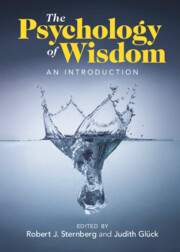Book contents
- The Psychology of Wisdom
- The Psychology of Wisdom
- Copyright page
- Contents
- Figures
- Tables
- Contributors
- Preface
- Part I Introduction to Wisdom Theory and Research
- Part II Foundations of Wisdom in the Individual and in the World
- Part III The Modifiability of Wisdom
- Part IV Wisdom in the World
- Chapter 13 Wisdom in the Professions
- Chapter 14 Wisdom and Leadership
- Chapter 15 Wisdom and Social Policy
- Index
- References
Chapter 14 - Wisdom and Leadership
from Part IV - Wisdom in the World
Published online by Cambridge University Press: 26 May 2022
- The Psychology of Wisdom
- The Psychology of Wisdom
- Copyright page
- Contents
- Figures
- Tables
- Contributors
- Preface
- Part I Introduction to Wisdom Theory and Research
- Part II Foundations of Wisdom in the Individual and in the World
- Part III The Modifiability of Wisdom
- Part IV Wisdom in the World
- Chapter 13 Wisdom in the Professions
- Chapter 14 Wisdom and Leadership
- Chapter 15 Wisdom and Social Policy
- Index
- References
Summary
This chapter outlines contemporary research related to excellent and inadequate leadership. This research reveals some practical problems arising in leadership research and identifies important psychological issues that contribute to bad or toxic leadership. The concept of wisdom, including practical wisdom, is elaborated as an effective and ethical foundation of leadership theory and practice. Central to practical wisdom are wise reasoning and the ability to do things wisely, including doing leadership wisely. There is a discussion of issues related to developing wisdom generally, and then specifically in leaders and potential leaders. The chapter fills a gap in understanding how to develop wisdom in people so that they act wisely. The chapter will give you some ideas on how to develop your wisdom potential. Finally, we will discuss the implications of our views on leadership and wisdom before concluding with reflections on why we keep appointing/ voting for bad leaders.
- Type
- Chapter
- Information
- The Psychology of WisdomAn Introduction, pp. 230 - 244Publisher: Cambridge University PressPrint publication year: 2022
References
- 1
- Cited by



